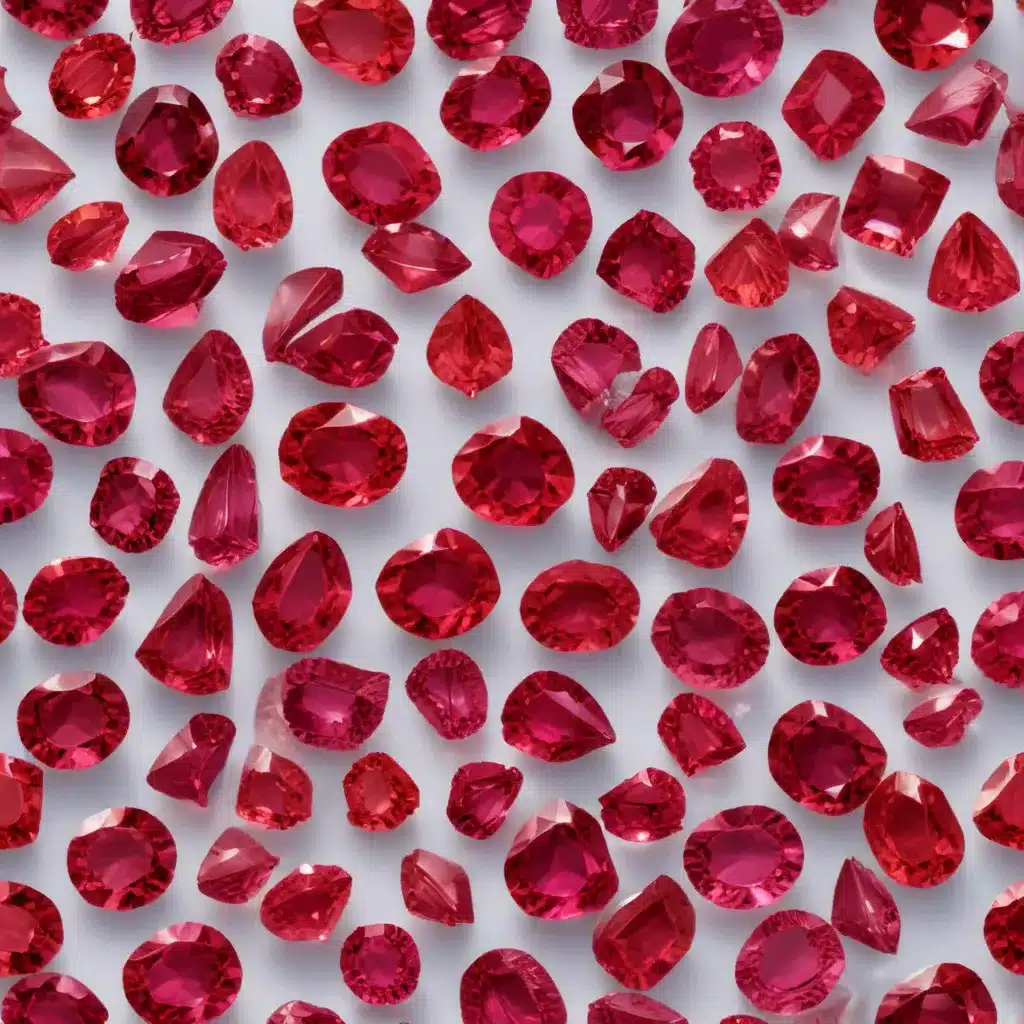
Rubies have captivated the world for centuries, prized for their fiery red hues and unparalleled brilliance. Yet, the true magic of these gems lies not just in their natural beauty, but in the intricate science behind their creation. Welcome to the extraordinary realm of lab-grown rubies, where the precision of technology meets the splendor of Mother Nature.
Composition and Structure
At the heart of a ruby’s allure is its unique elemental makeup. These gemstones are a variety of the mineral corundum, a crystalline form of aluminum oxide. What gives rubies their signature red color is the presence of chromium impurities, which interact with the corundum’s crystal structure to produce a mesmerizing range of scarlet hues.
The formation of ruby crystals is a testament to the power of nature. Beneath the Earth’s surface, intense heat and pressure forge these gems over millions of years, resulting in a distinct hexagonal crystal system and a hardness of 9 on the Mohs scale. This remarkable durability, combined with their superior light refraction and dispersion, is what makes rubies so captivating to the human eye.
Synthesis Techniques
While natural rubies are the product of geological wonders, their lab-grown counterparts are the result of human ingenuity. Gemstone scientists have developed sophisticated techniques to replicate the natural conditions that give rise to these precious stones.
One of the primary methods is the high-temperature flux growth process, where a ruby seed is immersed in a molten flux solution of lead oxide and tungsten oxide. As the temperature is carefully controlled, ruby crystals gradually grow around the seed, mimicking the geological forces that shape natural rubies.
Another approach is hydrothermal growth, which utilizes superheated, pressurized water to facilitate the crystallization of ruby. This technique allows for greater control over the growth environment, often yielding rubies with fewer internal imperfections.
The most advanced method, however, is chemical vapor deposition (CVD). In this process, a ruby seed is placed in a chamber filled with a gaseous mixture of hydrogen and methane. As the gases are heated to extreme temperatures, the carbon and oxygen atoms deposit onto the seed, forming a ruby crystal layer by layer.
Hue and Color Variations
The captivating red hue of rubies is the result of their chromium content, but lab-grown varieties offer an even more diverse palette of colors. By carefully manipulating the growth conditions and introducing additional trace elements, gemologists can produce rubies in a wide range of shades, from deep crimson to soft pink.
For instance, the addition of iron can create a reddish-orange or brownish-red color, while the presence of vanadium can impart a more purplish-red tone. The intensity of the color can also be tailored by controlling the concentration of chromium, allowing for the creation of both vivid, saturated rubies and their more subtle, pastel-like counterparts.
Natural Aesthetic Qualities
While lab-grown rubies may share the same chemical and physical properties as their natural counterparts, there are subtle differences that contribute to their unique visual appeal. One of the key factors is their brilliance and clarity.
Natural rubies often contain microscopic inclusions, or natural blemishes, that can affect their transparency and light refraction. In contrast, the carefully controlled growth process of lab-grown rubies typically results in fewer internal imperfections, allowing for a greater degree of clarity and an exceptional display of brilliance.
The surface finish of lab-grown rubies is also a testament to the precision of modern gemstone cutting and polishing techniques. Skilled artisans can optimize the facet angles and proportions of these synthetic stones, enhancing their ability to capture and refract light, ultimately creating a mesmerizing sparkle.
Authenticity Challenges
As the popularity of lab-grown rubies continues to rise, the distinction between natural and synthetic stones has become an important consideration for consumers and jewelers alike. While the two varieties are chemically and physically identical, there are subtle differences that can be detected through advanced gemological testing.
Specialized equipment, such as spectrometers and microscopes, can analyze the internal growth patterns, inclusions, and trace element compositions of a ruby to determine its origin. Additionally, reputable certification bodies, like the Gemological Institute of America (GIA), provide detailed reports that help ensure the authenticity and quality of both natural and lab-grown rubies.
Applications and Market Trends
The versatility of lab-grown rubies has made them increasingly sought-after in the jewelry and design industries. Their exceptional clarity, vivid colors, and consistent quality make them a popular choice for engagement rings, luxurious necklaces, and other high-end accessories.
Beyond the realm of fashion and adornment, lab-grown rubies have also found applications in the industrial and technological realms. Their superior hardness and thermal conductivity make them ideal for use in laser components, electronic devices, and specialized optical instruments.
As concerns over environmental sustainability and ethical sourcing grow, the appeal of lab-grown rubies has further increased. The absence of mining operations and the transparent supply chain of these synthetic gems have made them a more eco-friendly and socially responsible alternative to their natural counterparts.
The Future of Lab-Grown Rubies
The future of lab-grown rubies looks bright, as scientists and researchers continue to push the boundaries of gemstone synthesis. Advancements in growth techniques, such as the development of more efficient CVD methods and the exploration of new flux compositions, promise to further enhance the quality, consistency, and affordability of these captivating gems.
As the market dynamics continue to evolve, the distinction between natural and lab-grown rubies may become less pronounced in the eyes of consumers. With increasing awareness and acceptance of synthetic gemstones, the focus is shifting towards the inherent beauty and desirability of the stones themselves, rather than their method of creation.
The allure of lab-grown rubies lies in their ability to offer the same awe-inspiring splendor as their natural counterparts, while addressing the growing demand for more sustainable and ethical luxury. As we embrace the intersection of science and nature, these vibrant, lab-grown gems are poised to captivate the hearts and minds of jewelry enthusiasts for generations to come.

